Trivia Browser
Franchise: The Simpsons
▲
1
▼
In 1990s-era marketing for The Simpsons, Bart was consistently seen wearing light blue shirts in place of the orange shirt seen in the series, a still-unexplained phenomenon that has been referenced within the show itself. This element of marketing was reflected in many of the show's tie-in games, often with inconsistent shirt colors between a single game:
• The Simpsons Arcade Game features Bart in his light blue shirt for a majority of the game. However, in the opening, Bart can be seen wearing a red shirt for a brief moment when he jumps out of the school building.
• Most versions of The Simpsons: Bart vs. The Space Mutants depict Bart wearing a red shirt, a slight difference from orange. The Amiga, Atari ST, and Amstrad versions, however, depict him wearing light blue in gameplay, though the red can still be seen on the title screen, cutscenes, and box art.
• Bart wears a show-faithful orange in all versions of The Simpsons: Bart vs. the World. However, the sliding puzzle minigame in the NES version features an image of Bart with the light blue shirt, based on the famous "Don't have a cow, man!" t-shirt.
• The Simpsons: Bart's Nightmare primarily uses Bart's orange shirt. However, the title card shows Bart with a green shirt, and the Bartman minigame has Bart wear a bluish grey shirt, Bartman being assigned the blue shirt while regular Bart wears red or orange becomes a common theme from this point.
• The Simpsons: Bart Meets Radioactive Man is primarily a blue shirt game. However, in the intro, Bart begins with his orange shirt, which becomes a blue shirt when he dons the Bartman mask.
• Virtual Bart, while typically showing alternate universe Barts, shows Bart with an orange shirt whenever he is in his original outfit. However, the box art shows Bart wearing blue.
• The Simpsons: Night of the Living - Treehouse of Horror primarily features the orange shirt Bart, but he wears a blue shirt briefly in the intro.
• The Simpsons: Hit & Run is entirely an orange shirt game, but Bart can be seen with a dark blue shirt on the box art.
• In The Simpsons: Tapped Out, the most recent Simpsons video game, Bart wears an orange shirt, but Bartman wears a blue shirt.
The Simpsons: Bart's House of Weirdness, The Simpsons: Virtual Springfield, The Simpsons Bowling, The Simpsons Wrestling, and all versions of The Simpsons: Road Rage and The Simpsons Game all feature Bart wearing only orange shirts (even when Bartman appears), while The Simpsons: Cartoon Studio is the only game where Bart only wears blue shirts. Cartoon Studio was the final game to primarily use blue shirt Bart, while The Simpsons: Bart's House of Weirdness was the first game to not have any blue shirt Bart whatsoever. The Simpsons: Bart vs. the Juggernauts and The Simpsons: Escape from Camp Deadly depict blue and red shirt Bart respectively on their box arts, but do not have color, being Game Boy games.
• The Simpsons Arcade Game features Bart in his light blue shirt for a majority of the game. However, in the opening, Bart can be seen wearing a red shirt for a brief moment when he jumps out of the school building.
• Most versions of The Simpsons: Bart vs. The Space Mutants depict Bart wearing a red shirt, a slight difference from orange. The Amiga, Atari ST, and Amstrad versions, however, depict him wearing light blue in gameplay, though the red can still be seen on the title screen, cutscenes, and box art.
• Bart wears a show-faithful orange in all versions of The Simpsons: Bart vs. the World. However, the sliding puzzle minigame in the NES version features an image of Bart with the light blue shirt, based on the famous "Don't have a cow, man!" t-shirt.
• The Simpsons: Bart's Nightmare primarily uses Bart's orange shirt. However, the title card shows Bart with a green shirt, and the Bartman minigame has Bart wear a bluish grey shirt, Bartman being assigned the blue shirt while regular Bart wears red or orange becomes a common theme from this point.
• The Simpsons: Bart Meets Radioactive Man is primarily a blue shirt game. However, in the intro, Bart begins with his orange shirt, which becomes a blue shirt when he dons the Bartman mask.
• Virtual Bart, while typically showing alternate universe Barts, shows Bart with an orange shirt whenever he is in his original outfit. However, the box art shows Bart wearing blue.
• The Simpsons: Night of the Living - Treehouse of Horror primarily features the orange shirt Bart, but he wears a blue shirt briefly in the intro.
• The Simpsons: Hit & Run is entirely an orange shirt game, but Bart can be seen with a dark blue shirt on the box art.
• In The Simpsons: Tapped Out, the most recent Simpsons video game, Bart wears an orange shirt, but Bartman wears a blue shirt.
The Simpsons: Bart's House of Weirdness, The Simpsons: Virtual Springfield, The Simpsons Bowling, The Simpsons Wrestling, and all versions of The Simpsons: Road Rage and The Simpsons Game all feature Bart wearing only orange shirts (even when Bartman appears), while The Simpsons: Cartoon Studio is the only game where Bart only wears blue shirts. Cartoon Studio was the final game to primarily use blue shirt Bart, while The Simpsons: Bart's House of Weirdness was the first game to not have any blue shirt Bart whatsoever. The Simpsons: Bart vs. the Juggernauts and The Simpsons: Escape from Camp Deadly depict blue and red shirt Bart respectively on their box arts, but do not have color, being Game Boy games.
The Simpsons Arcade intro:
https://www.youtube.com/watch?v=1tCZiHLFk5A
Bart vs. The Space Mutants Amiga longplay:
https://www.youtube.com/watch?v=2StoU8xo2cg
Bart vs. The Space Mutants Atari ST:
https://www.youtube.com/watch?v=zUAxZ_2pp78
Bart vs. The Space Mutants Amstrad CPC longplay:
https://www.youtube.com/watch?v=Vg66PEX1RRI
Hit & Run box art:
https://www.mobygames.com/game/10421/the-simpsons-hit-run/cover/group-191694/cover-517763/
Bart vs. the World NES sliding puzzle:
https://www.youtube.com/watch?v=FWN-37Teja0#t=1848
Grey Shirt Bartman in Nightmare:
https://www.youtube.com/watch?v=cZyCyQI77kw#t=475
Shirt swap in Bart Meets Radioactive Man:
https://www.youtube.com/watch?v=VpJS5Lej8FI#t=62
Virtual Bart gameplay:
https://www.youtube.com/watch?v=joAK1pY0qxk
Night of the Living - Treehouse of Horror gameplay:
https://www.youtube.com/watch?v=fYfmKXL3jsw
Bartman in Tapped Out:
https://tstoaddicts.com/2015/03/04/should-i-spend-donuts-on-bartman/
Bartman's model from Hit & Run:
https://www.models-resource.com/pc_computer/simpsonshitrun/model/12480/
Bartman gameplay in The Simpsons Game:
https://www.youtube.com/watch?v=NeioSaKsP1k#t=t=131
https://www.youtube.com/watch?v=1tCZiHLFk5A
Bart vs. The Space Mutants Amiga longplay:
https://www.youtube.com/watch?v=2StoU8xo2cg
Bart vs. The Space Mutants Atari ST:
https://www.youtube.com/watch?v=zUAxZ_2pp78
Bart vs. The Space Mutants Amstrad CPC longplay:
https://www.youtube.com/watch?v=Vg66PEX1RRI
Hit & Run box art:
https://www.mobygames.com/game/10421/the-simpsons-hit-run/cover/group-191694/cover-517763/
Bart vs. the World NES sliding puzzle:
https://www.youtube.com/watch?v=FWN-37Teja0#t=1848
Grey Shirt Bartman in Nightmare:
https://www.youtube.com/watch?v=cZyCyQI77kw#t=475
Shirt swap in Bart Meets Radioactive Man:
https://www.youtube.com/watch?v=VpJS5Lej8FI#t=62
Virtual Bart gameplay:
https://www.youtube.com/watch?v=joAK1pY0qxk
Night of the Living - Treehouse of Horror gameplay:
https://www.youtube.com/watch?v=fYfmKXL3jsw
Bartman in Tapped Out:
https://tstoaddicts.com/2015/03/04/should-i-spend-donuts-on-bartman/
Bartman's model from Hit & Run:
https://www.models-resource.com/pc_computer/simpsonshitrun/model/12480/
Bartman gameplay in The Simpsons Game:
https://www.youtube.com/watch?v=NeioSaKsP1k#t=t=131

subdirectory_arrow_right Star Fox 2 (Game)
▲
1
▼
By scanning a Fox or Falco amiibo in Star Fox Zero, the Arwings and Walkers will be swapped out with 16-bit era models as seen in Star Fox and Star Fox 2. The old Arwing model's Charge shot does not lock on to targets, which reflects how they did not have a lock-on feature in Star Fox, but only in Star Fox 2 did they have a Charge shot. At the time of Star Fox Zero's release in 2016, Star Fox 2 remained unreleased, with only leaked beta builds being available, including one that allowed you to lock on to enemies with the Charge shot. The game would eventually be completed by Nintendo and released in 2017, but with this lock-on feature removed. Since Nintendo only showed Star Fox 2 to developers actively working on the series, it's believed that PlatinumGames noticed this feature's removal and referenced it in Star Fox Zero over a year before the game's release by making the old Arwings behave accurately to a version of Star Fox 2 that players did not know about.
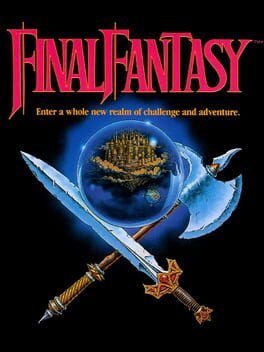
subdirectory_arrow_right Final Fantasy I & II: Dawn of Souls (Game)
▲
1
▼
Cid, a recurring character in the series who is usually a mechanic with some relation to airships, first appeared in Final Fantasy II and did not appear in the first Final Fantasy game. For the Final Fantasy I & II: Dawn of Souls re-release however, the original game's plot was retroactively changed to make "Cid of the Lufaine" the ancient creator of the airship that the protagonists used.
Final Fantasy I & II: Dawn of Souls - Cid backstory in Lufenia:
https://www.youtube.com/watch?v=IuJzaYSa4AU#t=147
Cid in the first two Final Fantasy games blog post:
http://home.eyesonff.com/content.php/2631-The-Iterations-of-Cid-Part-1
https://www.youtube.com/watch?v=IuJzaYSa4AU#t=147
Cid in the first two Final Fantasy games blog post:
http://home.eyesonff.com/content.php/2631-The-Iterations-of-Cid-Part-1

▲
1
▼
 In Version 0.04, Dense Woods A contained two jellyfish instead of just one, with the second being located by a lamppost near the center of the map; interacting with it only causes it to ring, without any additional results. In all recovered later builds, this jellyfish is moved out of bounds, well out of the camera's view; however, it can still be interacted with if the player uses cheats or glitches to access it. In Version 0.10, interacting with this jellyfish crashes the game due to its associated files being renamed: the jellyfish is programmed to call a file called イベント5, which was renamed to イベント_005 in Version 0.10.
In Version 0.04, Dense Woods A contained two jellyfish instead of just one, with the second being located by a lamppost near the center of the map; interacting with it only causes it to ring, without any additional results. In all recovered later builds, this jellyfish is moved out of bounds, well out of the camera's view; however, it can still be interacted with if the player uses cheats or glitches to access it. In Version 0.10, interacting with this jellyfish crashes the game due to its associated files being renamed: the jellyfish is programmed to call a file called イベント5, which was renamed to イベント_005 in Version 0.10.Additionally, Dense Woods A's layout was redesigned in Version 0.07 to remove a gate that originally led to Mural World. Instead, the upper path is expanded to loop over to the western portion of the main road in Dense Woods A, and the remaining gate leading to Puddle World was redesigned.
The Cutting Room Floor article:
https://tcrf.net/Proto:Yume_Nikki/Map_and_Event_Differences/Minor_Maps#Dense_Woods_A
YouTube video showing the use of a noclip glitch to access the offscreen jellyfish in Version 0.10:
https://www.youtube.com/watch?v=z9gNNPmZxd8
https://tcrf.net/Proto:Yume_Nikki/Map_and_Event_Differences/Minor_Maps#Dense_Woods_A
YouTube video showing the use of a noclip glitch to access the offscreen jellyfish in Version 0.10:
https://www.youtube.com/watch?v=z9gNNPmZxd8

subdirectory_arrow_right Pac-Man World Re-Pac (Game)
▲
1
▼
Pac-Man World's ending has been noted for containing darker humor compared to the game's otherwise lighthearted tone. The game's antagonist Toc-Man, the robot impostor who kidnapped Pac-Man's family, is revealed to be Orson, a tearful grey ghost who just wanted to be as famous as Pac-Man, who responds to this by pretending to show sympathy before eating him. According to the game's designer, Scott Rogers, his reasoning for this tonal shift was:
Rogers also noted that they wanted to have Pac-Man respond to Orson's cry of "nobody loves a ghost!" with "I do!" (in the sense of loving to eat a ghost), but this was scrapped alongside Pac-Man's voice as a whole.
Pac-Man World: Re-Pac amends this divisive ending by designating it as a bad ending and adding a new good ending. If the player fails to rescue Pac-Man's family, the ending plays out as it did in the original game, with an added scene where Orson's ghost minions choose to rescue Pac-Man's family themselves, but if the player successfully rescues Pac-Man's family, he opts to forgive Orson.
"If someone terrorized, kidnapped, and imprisoned your friends and family, you'd probably want to eat them too."
Rogers also noted that they wanted to have Pac-Man respond to Orson's cry of "nobody loves a ghost!" with "I do!" (in the sense of loving to eat a ghost), but this was scrapped alongside Pac-Man's voice as a whole.
Pac-Man World: Re-Pac amends this divisive ending by designating it as a bad ending and adding a new good ending. If the player fails to rescue Pac-Man's family, the ending plays out as it did in the original game, with an added scene where Orson's ghost minions choose to rescue Pac-Man's family themselves, but if the player successfully rescues Pac-Man's family, he opts to forgive Orson.
Twitter thread interview with Scott Rogers:
https://twitter.com/DailyPacMan/status/1548088755763888129
Pac-Man World cutscenes:
https://www.youtube.com/watch?v=1I8bA-6QNh4
Both Pac-Man World Re-Pac endings:
https://www.youtube.com/watch?v=adPHuphqr7o#t=389
https://twitter.com/DailyPacMan/status/1548088755763888129
Pac-Man World cutscenes:
https://www.youtube.com/watch?v=1I8bA-6QNh4
Both Pac-Man World Re-Pac endings:
https://www.youtube.com/watch?v=adPHuphqr7o#t=389
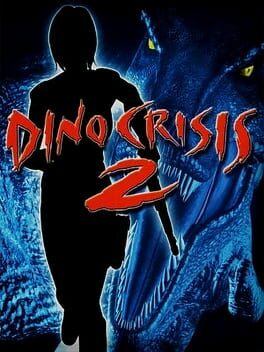
▲
1
▼
Capcom offered a demo CD based upon a beta build of the game as a pre-release promo. The entire build was on the disk, with a "time trial" style of gameplay lasting 45 minutes before exiting the game. A code was eventually worked out, utilizing a GameShark cheat device in order to disable the time trial demo's timer, enabling complete access to this earlier version. A list of notable differences compared to the retail release have been noted as a result, and Capcom would never release a time trial demo disc again.

▲
1
▼
 Prior to Version 0.07, the guillotine NPC that provides the Severed Head effect when interacted with was located in Block World rather than the Guillotine Room (the latter of which is commonly known as such due to the guillotine's presence there in later builds). Instead, the latter area only features the lunatic Toriningen and cupboards.
Prior to Version 0.07, the guillotine NPC that provides the Severed Head effect when interacted with was located in Block World rather than the Guillotine Room (the latter of which is commonly known as such due to the guillotine's presence there in later builds). Instead, the latter area only features the lunatic Toriningen and cupboards.This early iteration consequently made Block World one of only two areas in the game that featured more than one effect (the second being the Hat & Scarf effect, which is obtainable from Block World in all known builds). From Version 0.07 onward, this distinction is only held by Mural World (which features both the Blonde and Long Hair effects).

▲
1
▼
 In the earliest builds of Yume Nikki, in-game text was not given windows outside of the game's menus; this feature was not added until Version 0.05. Curiously, while overworld text is generally sparse, Version 0.10 features data for a three-line window, far more than what is normally needed. This appears to line up with a text prompt in Version 0.04 – but not Version 0.06 onward – that appears when Madotsuki attempts to return the swivel chair to her desk in the dream world version of her apartment.
In the earliest builds of Yume Nikki, in-game text was not given windows outside of the game's menus; this feature was not added until Version 0.05. Curiously, while overworld text is generally sparse, Version 0.10 features data for a three-line window, far more than what is normally needed. This appears to line up with a text prompt in Version 0.04 – but not Version 0.06 onward – that appears when Madotsuki attempts to return the swivel chair to her desk in the dream world version of her apartment.Because Version 0.05 is not currently available to the public, it is unknown if this window was indeed used for the prompt in that build or if the text was removed before the idea could be implemented.

▲
1
▼
 The English Steam release features a number of bugs not present in other editions:
The English Steam release features a number of bugs not present in other editions:• The lights do not dim when Madotsuki sleeps in the spaceship's bed, as the graphical filter is mistakenly set to transparent.
• Certain sound effects, such as those for flying on the Witch effect's broom and talking to an FC Priori, do not play due to them being misnamed in the game's files.
• If Madotsuki equips the Traffic Light effect, switches to the red light, and talks to the Toriningen that changes the UI's palette, the resulting text box is corrupted. This is because the correct text is displayed on another line that went untranslated.
Curiously, although the Steam release was updated four times to fix various other glitches and mistakes, none of the patches fixed any of these errors.
The Cutting Room Floor articles:
https://tcrf.net/Bugs:Yume_Nikki#Bugs_in_the_English_Steam_version
https://tcrf.net/Yume_Nikki#Steam_Version
https://tcrf.net/Bugs:Yume_Nikki#Bugs_in_the_English_Steam_version
https://tcrf.net/Yume_Nikki#Steam_Version

▲
1
▼
 The unpatched release of Version 0.10 contains unused data for an event on Mars called "階段←↓". Re-enabling this event opens an alternate, invisible entrance to the Martian underground, to the left of the hole that leads to it in the final game; however, the map's collision data prevents Madotsuki from actually using it without the aid of further cheats.
The unpatched release of Version 0.10 contains unused data for an event on Mars called "階段←↓". Re-enabling this event opens an alternate, invisible entrance to the Martian underground, to the left of the hole that leads to it in the final game; however, the map's collision data prevents Madotsuki from actually using it without the aid of further cheats.Furthermore, the game contains unused graphics for a stairway that matches the visuals of the Martian surface, and the Martian underground features several flights of stairs at the beginning. This indicates that the underground was originally meant to be accessed via the unused stairway rather than needing Madotsuki to activate the Midget effect, with the summit's layout being changed concurrently with the altered entrance. The Yumesyuusei Patch and all releases based on it (including the official English release) remove the data for 階段←↓, though the unused stair tiles are unaffected.
Additionally, the game's code contains tiles for doors on the walls of the Martian underground, indicating that the sub-area was originally planned to feature multiple rooms rather than just one. This, combined with the unused alternate entrance, implies that Kikiyama had to leave Mars incomplete for unknown reasons, polishing up what was already completed late into Version 0.10's development.
The Cutting Room Floor articles:
https://tcrf.net/Yume_Nikki#Mars_Stairs
https://tcrf.net/Yume_Nikki/Unused_ChipSet_Graphics#Mars
https://tcrf.net/Yume_Nikki#Mars_Stairs
https://tcrf.net/Yume_Nikki/Unused_ChipSet_Graphics#Mars

▲
1
▼
 In the Japanese version, the test battle in the debug room features a proper background and models for the enemies included (borrowed from other enemies), whereas the international version simply pits the party against yellow pyramids in a black void.
In the Japanese version, the test battle in the debug room features a proper background and models for the enemies included (borrowed from other enemies), whereas the international version simply pits the party against yellow pyramids in a black void.Additionally, the very first Japanese release contains an unfinished eleventh section of the debug room, left over from an earlier build of the game. Because the game's code changed significantly since that build, much of the eleventh section is broken: Cloud's model does not show up (though he is still able to move around and interact with the NPCs there), text is corrupted, and the background music is a heavily distorted version of Aeris' theme.
The Cutting Room Floor articles:
https://tcrf.net/Final_Fantasy_VII/Debug_Room#Region_Differences
https://tcrf.net/Final_Fantasy_VII/Debug_Room#Old_Broken_Leftover
YouTube video showcasing the unfinished eleventh section:
https://www.youtube.com/watch?v=3krwav_u4lg
https://tcrf.net/Final_Fantasy_VII/Debug_Room#Region_Differences
https://tcrf.net/Final_Fantasy_VII/Debug_Room#Old_Broken_Leftover
YouTube video showcasing the unfinished eleventh section:
https://www.youtube.com/watch?v=3krwav_u4lg

▲
1
▼
Within all available builds of the game are sprites for three possible effects that were never implemented. One set of sprites depicts Madotsuki blindfolded, another depicts a grayscale version of her similar to the "ghost" found in Mini Hell, and a third depicts 8-bit versions of the "crick in the neck," which in the final game is instead an event where Madotsuki randomly wakes up with her head stuck facing leftward. Of note is that Versions 0.07 to 0.09 additionally feature sprites for blindfolded and grayscale Madotsuki pinching herself awake; Version 0.10 overwrites them with the "active" sprites for the Spirit Headband effect.
Additionally, the game's data contains an unused mugshot depicting what appears to be an early iteration of the Spirit Headband effect, in which Madotsuki turns into a hitodama (a disembodied soul which appears as a floating ball of fire, comparable to a will-o'-the-wisp in many Western cultures) rather than becoming invisible. A full set of sprites for this version is also present in Version 0.04's data, showing that rather than turning invisible, pressing the 1 key would've simply changed the fire's color.
Additionally, the game's data contains an unused mugshot depicting what appears to be an early iteration of the Spirit Headband effect, in which Madotsuki turns into a hitodama (a disembodied soul which appears as a floating ball of fire, comparable to a will-o'-the-wisp in many Western cultures) rather than becoming invisible. A full set of sprites for this version is also present in Version 0.04's data, showing that rather than turning invisible, pressing the 1 key would've simply changed the fire's color.
The Cutting Room Floor articles:
https://tcrf.net/Yume_Nikki#Unused_Effect_Sprites
https://tcrf.net/Proto:Yume_Nikki/Version_0.04/Unused_Graphics#Effects
https://tcrf.net/Proto:Yume_Nikki/Version_0.07/Unused_Graphics#New_to_v0.07
https://tcrf.net/Proto:Yume_Nikki/Version_0.08/Unused_Graphics#Shared_with_v0.07
https://tcrf.net/Proto:Yume_Nikki/Version_0.09/Unused_Graphics#Shared_with_v0.08
https://tcrf.net/Proto:Yume_Nikki/Version_0.04/Unused_Graphics#Will-o.27-the-Wisp
https://tcrf.net/Yume_Nikki#Unused_Effect_Sprites
https://tcrf.net/Proto:Yume_Nikki/Version_0.04/Unused_Graphics#Effects
https://tcrf.net/Proto:Yume_Nikki/Version_0.07/Unused_Graphics#New_to_v0.07
https://tcrf.net/Proto:Yume_Nikki/Version_0.08/Unused_Graphics#Shared_with_v0.07
https://tcrf.net/Proto:Yume_Nikki/Version_0.09/Unused_Graphics#Shared_with_v0.08
https://tcrf.net/Proto:Yume_Nikki/Version_0.04/Unused_Graphics#Will-o.27-the-Wisp

▲
1
▼
 In all earlier builds of the game, Neon World featured a radically different layout, matching the open-world structure of the other "main" locations accessible from the Nexus. The sole relic of this in Version 0.10's segmented design is the room that Madotsuki starts in, which is much bigger and features a more spread-out tile pattern compared to the other rooms in Neon World.
In all earlier builds of the game, Neon World featured a radically different layout, matching the open-world structure of the other "main" locations accessible from the Nexus. The sole relic of this in Version 0.10's segmented design is the room that Madotsuki starts in, which is much bigger and features a more spread-out tile pattern compared to the other rooms in Neon World.One noteworthy casualty from the layout change is the removal of various head-like figures scattered across Neon World in Version 0.09. These figures are not seen anywhere in Version 0.10, making them the only documented "characters" that were outright removed (rather than relocated) in a later update.

▲
1
▼
 Number World was not implemented until Version 0.08; in prior builds, the gray door in the Nexus with a large red circle on it instead lead to an early iteration of Lamp World. Of note is that the earlier version of Lamp World features an alcove full of beds and cupboards. A bloodstain is also present in the bottom-right corner of the room; in Version 0.07, this stain teleports Madotsuki to the Guillotine Room when stepped on. This alcove would be moved to the Number World in Version 0.08 onward, and the bloodstain would be replaced with a Zippertile spewing blood out of its mouth, still acting as a warp to the Guillotine Room.
Number World was not implemented until Version 0.08; in prior builds, the gray door in the Nexus with a large red circle on it instead lead to an early iteration of Lamp World. Of note is that the earlier version of Lamp World features an alcove full of beds and cupboards. A bloodstain is also present in the bottom-right corner of the room; in Version 0.07, this stain teleports Madotsuki to the Guillotine Room when stepped on. This alcove would be moved to the Number World in Version 0.08 onward, and the bloodstain would be replaced with a Zippertile spewing blood out of its mouth, still acting as a warp to the Guillotine Room.Additionally, the early version of Lamp World featured background music that is not present anywhere in Version 0.08 onward; this track was also used for the Face Carpet area in Forest World before it was concurrently replaced in Version 0.08 with the background music for the hot springs building in the Wilderness, played at 70% speed.

This trivia has been marked as "Not Safe for Work".
It may not be appropriate for all visitors and definitely isn't appropriate for work or school environments.
Click here to unhide it.
It may not be appropriate for all visitors and definitely isn't appropriate for work or school environments.
Click here to unhide it.
▲
1
▼
The Cutting Room Floor article:
https://tcrf.net/Doki_Doki_Literature_Club_Plus!#Version_Differences
YouTube video showcasing the scene in the PlayStation 4 & 5 versions:
https://www.youtube.com/watch?v=ZRCIG11T534
YouTube video showcasing the scene in all other versions of the game:
https://www.youtube.com/watch?v=5w1gNV6pOgg
https://tcrf.net/Doki_Doki_Literature_Club_Plus!#Version_Differences
YouTube video showcasing the scene in the PlayStation 4 & 5 versions:
https://www.youtube.com/watch?v=ZRCIG11T534
YouTube video showcasing the scene in all other versions of the game:
https://www.youtube.com/watch?v=5w1gNV6pOgg

subdirectory_arrow_right Ranma ½: Chounai Gekitou-hen (Game)
▲
1
▼
 Street Combat was originally released in Japan as Ranma ½: Chounai Gekitou Hen, a tie-in with the anime adaptation of Rumiko Takahashi's 1987 manga Ranma ½. The American release stripped out all references to the source material due to its obscurity in the United States at the time, though the in-game sprites for Street Combat's cast are visibly traced over their Ranma ½ counterparts. Additionally, Happosai and Cologne are merged into a single character, Happy, in Street Combat.
Street Combat was originally released in Japan as Ranma ½: Chounai Gekitou Hen, a tie-in with the anime adaptation of Rumiko Takahashi's 1987 manga Ranma ½. The American release stripped out all references to the source material due to its obscurity in the United States at the time, though the in-game sprites for Street Combat's cast are visibly traced over their Ranma ½ counterparts. Additionally, Happosai and Cologne are merged into a single character, Happy, in Street Combat.
The Cutting Room Floor article:
https://tcrf.net/Street_Combat
Hardcore Gaming 101 article:
http://www.hardcoregaming101.net/street-combat-ranma-%C2%BD-chounai-gekitouhen/
YouTube video comparing the Japanese and US versions:
https://www.youtube.com/watch?v=pttH2daFIjM
https://tcrf.net/Street_Combat
Hardcore Gaming 101 article:
http://www.hardcoregaming101.net/street-combat-ranma-%C2%BD-chounai-gekitouhen/
YouTube video comparing the Japanese and US versions:
https://www.youtube.com/watch?v=pttH2daFIjM

▲
2
▼
 The original release of the 1988 DOS version of Tetris features an animation on the title screen where a white Cessna airplane flies over the title logo; after the opening scroll, it reappears while dragging a banner that reads "PLAY TETRIS!" This sequence references Mathias Rust, a West German teenager who illegally piloted a Cessna from Uetersen Airfield to Moscow the previous year in an attempt to relieve tensions between the United States and Soviet Union, landing near Red Square.
The original release of the 1988 DOS version of Tetris features an animation on the title screen where a white Cessna airplane flies over the title logo; after the opening scroll, it reappears while dragging a banner that reads "PLAY TETRIS!" This sequence references Mathias Rust, a West German teenager who illegally piloted a Cessna from Uetersen Airfield to Moscow the previous year in an attempt to relieve tensions between the United States and Soviet Union, landing near Red Square.Rust's flight was a major embarrassment for the Soviet military due to him disproving the notion that their defenses were ironclad. Consequently, later revisions of the game removed the animation on orders from ELORG, the Soviet Union's state-sponsored computer company and the owners of the Tetris license at the time.
The Cutting Room Floor article:
https://tcrf.net/Tetris_(DOS,_Spectrum_HoloByte)#Title_Screen
Smithsonian Magazine article:
https://www.smithsonianmag.com/air-space-magazine/the-notorious-flight-of-mathias-rust-7101888/
BBC article:
https://www.bbc.com/news/magazine-20609795
https://tcrf.net/Tetris_(DOS,_Spectrum_HoloByte)#Title_Screen
Smithsonian Magazine article:
https://www.smithsonianmag.com/air-space-magazine/the-notorious-flight-of-mathias-rust-7101888/
BBC article:
https://www.bbc.com/news/magazine-20609795
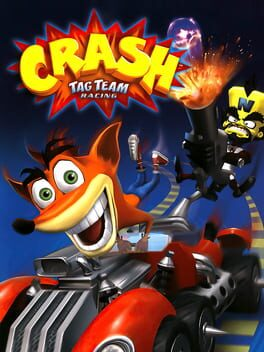
▲
1
▼
 The box arts of Japanese Crash Bandicoot localizations have historically used a redesign for Crash with larger eyes. This has been done for all games except for the "Titans" sub-series, which had its own distinct Crash design, and the Toys for Bob-developed games.
The box arts of Japanese Crash Bandicoot localizations have historically used a redesign for Crash with larger eyes. This has been done for all games except for the "Titans" sub-series, which had its own distinct Crash design, and the Toys for Bob-developed games.However, the only games that feature the design in-game for the Japanese localizations are the Japanese-developed Crash Boom Bang!, and Crash Tag Team Racing, which had a skin system that allowed Japanese Crash to appear abroad as well. A good chunk of Crash's costumes in Crash Tag Team Racing also got Japanese versions, though these combination costumes were not included in the Western release.
Explanation of box art changes:
https://www.youtube.com/watch?v=rbusKVM37Fw?t=68
Image gallery of assorted JP Crash design appearances:
https://crashbandicoot.fandom.com/wiki/Japanese_Crash
Localizations:
https://tcrf.net/Crash_Boom_Bang!
https://tcrf.net/Crash_Tag_Team_Racing#Japanese
https://www.youtube.com/watch?v=rbusKVM37Fw?t=68
Image gallery of assorted JP Crash design appearances:
https://crashbandicoot.fandom.com/wiki/Japanese_Crash
Localizations:
https://tcrf.net/Crash_Boom_Bang!
https://tcrf.net/Crash_Tag_Team_Racing#Japanese
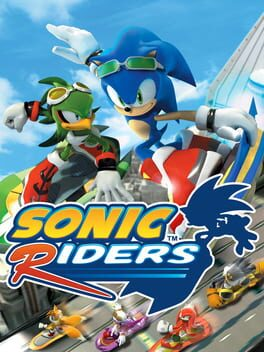
▲
2
▼
 The international logo for the game contains a tiny vectoring error at the bottom of the first "R" of "Riders". This mistake can't be seen on the title screen due to the lower resolution used, but it can barely be seen on the cover art for differing releases of the game.
The international logo for the game contains a tiny vectoring error at the bottom of the first "R" of "Riders". This mistake can't be seen on the title screen due to the lower resolution used, but it can barely be seen on the cover art for differing releases of the game.
Sonic Riders American and European title screens:
https://www.youtube.com/watch?v=M7rVMMUSKzQ?t=183
https://www.youtube.com/watch?v=VdtLpm_kcc0?t=114
Sonic Riders different box arts with logo error:
https://www.mobygames.com/game/21419/sonic-riders/covers/
Sonic Riders high quality logo with error:
https://www.steamgriddb.com/logo/15129
https://www.youtube.com/watch?v=M7rVMMUSKzQ?t=183
https://www.youtube.com/watch?v=VdtLpm_kcc0?t=114
Sonic Riders different box arts with logo error:
https://www.mobygames.com/game/21419/sonic-riders/covers/
Sonic Riders high quality logo with error:
https://www.steamgriddb.com/logo/15129
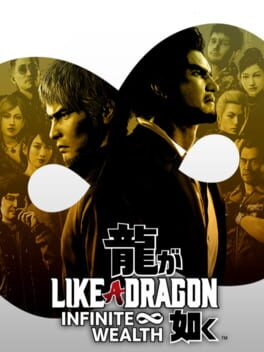
▲
1
▼
In the Japanese dub, upon meeting Eiji Mitamura for the first time on the plane, Eiji will tell Ichiban the French phrase "Bon voyage" (usually translated to English as "have a nice trip"). In the English dub, this was changed to the Hawaiian phrase "a hui hou" (translated to English as "until we meet again") to fit with the Hawaiian setting of the game.
Yakuza trivia video:
https://www.youtube.com/watch?v=EPs_XfOk4F0#t=800s
Wikitionary definiton for "hui":
https://en.wiktionary.org/wiki/hui#Verb
https://www.youtube.com/watch?v=EPs_XfOk4F0#t=800s
Wikitionary definiton for "hui":
https://en.wiktionary.org/wiki/hui#Verb
